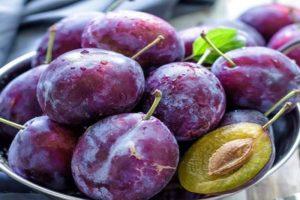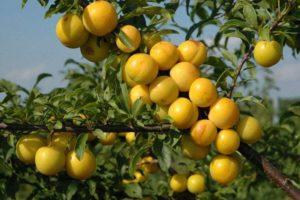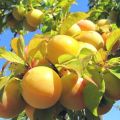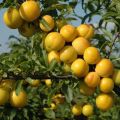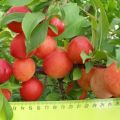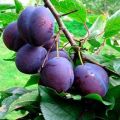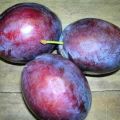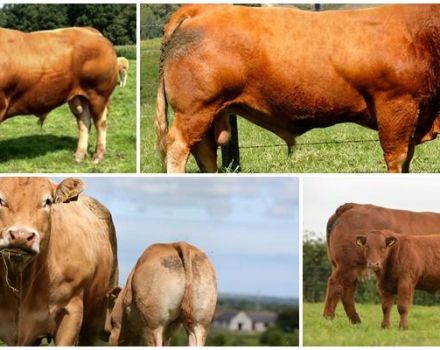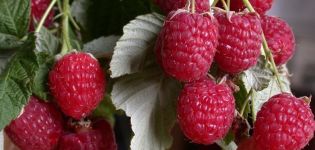Description of the plum variety Starter, pollinators, cultivation and care
Starter plum is a variety that bears a bountiful harvest, therefore this variety is in demand among many gardeners. The fruits are fragrant, juicy, sweet taste. Trees have powerful immunity against diseases and pests. The variety does not require special care; even an inexperienced summer resident can grow it. Beforehand, you should familiarize yourself with all the nuances of planting, looking after the plant.
How was the Startovaya plum variety bred
Varietal variety of Startovaya plum was bred by flower growers G. Kursakov, R. Bogdanov, G. Nikiforov and T. Pisanova. They connected Eurasia-21 and the Volga beauty. As a result, Startovaya plum appeared, in 2006 it was included in the State Register. The plant is widely grown not only in Russia, but also in Ukraine, Estonia, Georgia.
Description of the tree
Plum Startovaya is a medium-sized tree with a dense spherical bush. It grows up to 3 meters high. The shoots of the fruit plant are of medium thickness, slightly curved, brownish-red, sometimes with a silvery coating. Buds slightly recede from the stem, brown color.
Leaves of a deep green hue, reach large sizes, wide with a pointed, ribbed edge. The surface is characterized by wrinkling, petioles with slight pigmentation. The variety blooms in large flowers, white in color. The flower cups are bell-shaped. There is an anther under the stigma of the pistil. Plum will be a wonderful decoration for the garden during the pollen period.
Culture characteristics
Fruits grow up to 60 grams, oval in shape with a small fossa. They received a tasting score of 4.7 points. On the surface there is a bluish bloom with a purple undertone.
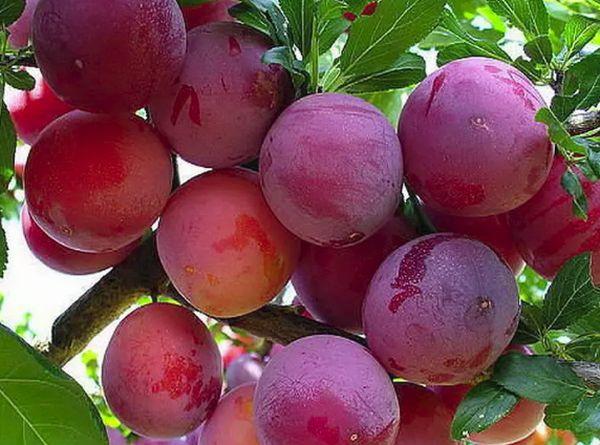
The Starter Plum pulp is famous for the following features:
- amber;
- rich, juicy, sweet and sour taste;
- the nectar is transparent, watery.
Ripe fruits are easily separated from the stem.
Resistant to low temperatures and drought
Plum tolerates frosts down to -40 degrees, adult shoots do not require shelter. This is one of the most frost-resistant varieties. Due to its increased resistance to low temperatures, the tree is grown in the northern regions and the middle lane.
Exposure to parasites and diseases
Plum Startovaya is one of the varieties with powerful immunity. The plant does not suffer from standard diseases such as scab, fruit rot, gum flow, coccomycosis. Pests also do not eat it. No preventive treatments are required.
Pollinators
Plum of the Starter variety belongs to self-fertile plants, but forms a small number of ovaries. For this reason, she needs pollinators. These include Eurasia-21 and the Volga beauty.

Productivity and fruiting
Plum ripens early, brings about 61 centners of berries per hectare. One tree bears up to 50 kilograms of fruit in 3 years after planting the cuttings and in the 6th year, if a seed was used during planting. The berries do not fall for about 1-2 weeks, which plays into the hands of summer residents. The longer the fruits sit on the tree, the sweeter they are. It is also not worth waiting out with the harvest, it is advisable to pick the fruits 2-3 days after they ripen.
Fruit use
Plums Starter grade for universal use, used in industry and for making homemade preparations. Berries are widely used for making jam, jam, wine, candied fruits, compotes. They easily survive freezing, you can decorate them with ice cream slices.
The sweet and sour taste of the fruit will add a touch of exoticism to the dessert. Fruit can be stored for no more than 25 days. Before freezing, the plum is sorted out, spoiled or damaged fruits are thrown out, washed, dried. If you put undried berries in the freezer, they turn into porridge.
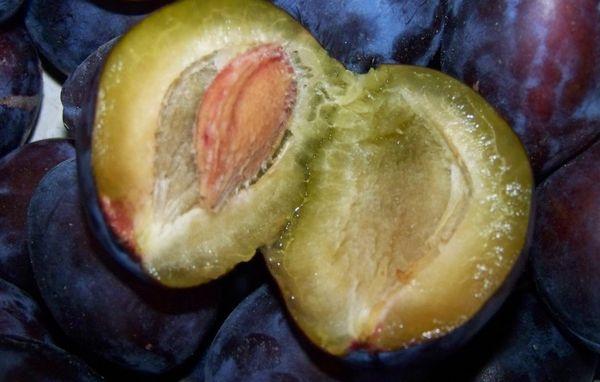
Why the variety is good: is it worth planting on the site?
The Startovy plum variety has a number of advantages, thanks to which gardeners fell in love with it. The pluses include:
- earlier fruiting;
- trouble-free transportation, storage;
- resistance to diseases, pests, frost;
- universality of application.
Among the shortcomings, only the lack of self-pollination is distinguished. Plum should be planted on the site unambiguously, this type is especially suitable for summer residents.
Landing technology
The starting drain does not imply any special planting technologies. The technique is the same as for other varieties. It is necessary to choose the right place, prepare the soil. The seedlings are fixed with a support stake.
Optimal time for disembarkation
Experienced gardeners advise planting the Starter Plum in April or October, before frost. In 2 years, the stalk grows to the size of a seedling. It can be transplanted to another area or left to grow in the same place. A plant planted in spring manages to develop a rhizome before frost, easily survives a cold period.
In autumn, young shoots do not respond to damage to the rhizome, it is only important to purchase high-quality material. When planting in autumn, seedlings need to be covered for the winter. She will not have time to form a root system before frost.
Choosing the right place
The starting plum should be planted in a well-lit place where the north winds do not blow. The plant prefers loamy, fertile soil with an acidity of 6.5-7 pH. The groundwater level should not be closer than 2 meters to the top.
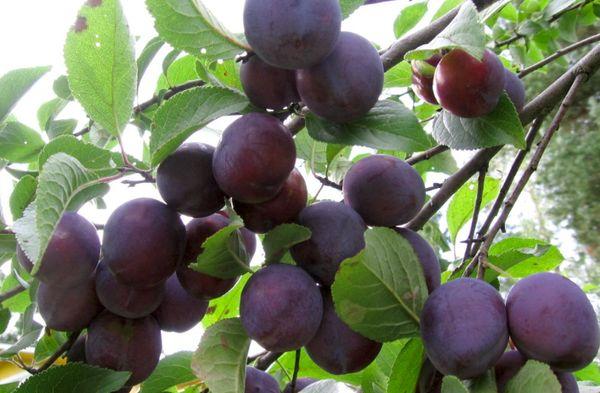
What crops can and cannot be planted nearby
Gardeners distinguish a number of trees that, when adjacent to the Startova plum, have a negative effect on it. They take useful trace elements from the soil, interfere with the development of the rhizome.
The variety should not be planted next to such crops:
- Walnut;
- hazel;
- fir;
- Birch;
- poplar.
Difficult relationships happen with the pear too. You can plant other crops near the Start Plum, but at a distance of 10 meters. Then the trees will bear fruit abundantly.
Preparing the seedling
The starter plum is usually grown from a scion. It is cheaper to sow seeds, but fruiting occurs after a longer time. It is better to purchase a seedling with its own roots for planting, a fruitful tree will grow from it. 2-3 year old seedlings are suitable.They should have 3-5 main roots, 25-30 centimeters long.

Plum planting process
When it comes to spring planting, the pits are prepared in the fall. Store the material dug in. When planting is planned for the fall, prepare the hole in a month.
- It is advisable to plant starting plums at a distance of 3-4 m, and 5-6 m between rows.
- Dig holes 70-80 cm in diameter and 70 cm deep.
- If the soil is peaty or sandy, pour a clay mass into the hole up to 10 cm level.
- Dig a 110 cm stick into the bottom, put eggshells in there, cover 2/3 with a combination of soil and fertilizer.
- Spread the roots of the Starting Plum, place the planting material in the pit.
- Cover with soil to the end, tamp thoroughly.
- Around the seedling, sprinkle from the bottom layer of the earth.
- Tie the shoot to the stake, pour abundantly with 3 buckets of water.
You should first feed the land. This is done with 2 buckets of humus, compost and peat. The procedure will help the seedling take root better. The root system must not be deeply deepened so that the roots do not get locked and rotted. It should rise 3-4 cm above the ground.
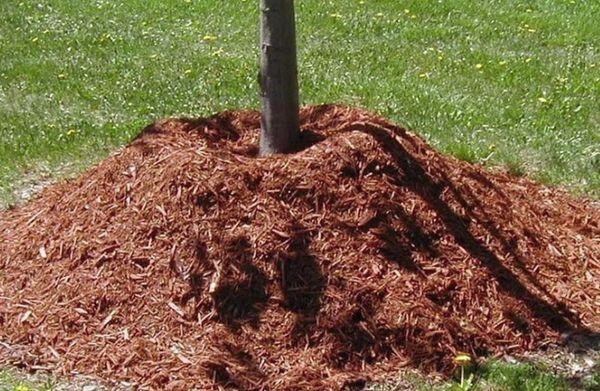
How to care for a tree
Careful supervision is especially important in the first 2 years of the Starter Plum's life. The trunk circle occupies a diameter of 2 meters and requires the following measures:
- regular watering;
- weed removal;
- trimming;
- top dressing.
Mulching is carried out around the trunk after each watering. For this they use hay, dry grass, sawdust. The procedure stimulates the growth and development of the tree. You also need to loosen the soil before mulching so that air exchange takes place in the soil.
Formation and pruning of the crown
Young plums require pruning in the 2nd year after planting. Remove damaged, weakened or twisted branches with a disinfected pruner. At the first color, flowers are cut off so that the next season the plum will bear many fruits. You should also remove the root growth as it will drain the power of the Starter variety tree. The event is held 4-5 times a summer.
Irrigation regularity
The Starter plum grows well with proper moisture. It needs to be watered abundantly and in a timely manner. Irrigation in spring is carried out 2-3 times a week for young seedlings, since the soil dries quickly in warm weather. Adult plums are watered once a week, 5-6 buckets per tree. The fruiting plant is irrigated with 10 liters of water.
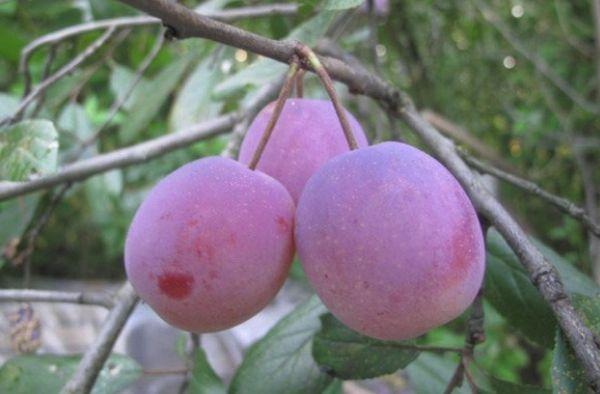
In the fall, you can water the Starter Plum 2 times a month. Pour water slowly so that there is no stagnation of water. It should not be icy or hot, medium temperature.
Fertilization
You need to feed the plum in April, mid-June and after harvesting the fruits. Urea, wood ash, nitrogen and phosphorus fertilizers, organic matter and superphosphate are used. In autumn, any organic matter is introduced into the ground. Dilute purchased fertilizers strictly according to the instructions, the result depends on it.
Diseases and pests
Plum Startovaya is famous for its persistent protective properties that resist pathogens of fungal diseases. She is not afraid of pests. Mature trees do not need to be treated with chemicals. Due to timely pruning, watering, plums will give a lot of yield consistently.
Preparing the plant for winter
There is no need to protect the starting drain from frost. Young seedlings are covered with a non-woven cloth like burlap, after having built a wire frame.
